How to clean your kitchen with some of the BEST KITCHEN GREASE CLEANER
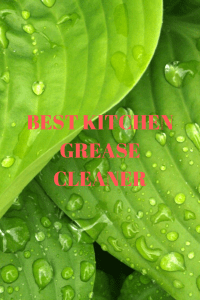
Kitchens are associated with aromatic smell. The savory smell of freshly baked ribs, the ambrosial touch of roasted coffee beans or the tantalizing coriander finish. The aftermath of this, comes the dirty and greasy surfaces.
Every household has a unique way of handling this. Like leaving the house and moving to the nearest hotel room.
That is not a solution though. It is advisable to keep the kitchen clean as this enhances our health by avoiding infections.
In this article we tackle the best kitchen grease cleaner on different surfaces:
1.Degreasing utensils.
When it comes to the best kitchen degreaser, preference has always won. The first choice is one to pick between homemade degreasers or commercial ones. The commercial degreasers have dozens of options to go with and this complicates the whole process. For the best in line, several qualities are important to look at:
•How friendly it is to your Skin and environment.
•Efficiency in removing sticky grease.
•Ease of being watered down.
•Effect on the washing fabric
•Strength needed to clean tough surfaces.
•Cost of the degreaser.
Once you have ascertained the qualities are tuned to your liking, it is time to get down to work. The cooking pot do contain lots of grease.
If you not using the non-stick pots, the scrubbing is always intense due to the overcooked gunk at the bottom.
Use enough grease remover in the pot, them scrub using a non-abrasive scrubber on the inside and outside.
For non-stick pots, it is advisable to soak them in water for sometime before giving them a scrub. Rinse them clean and wipe off the water.
2.Kitchen walls
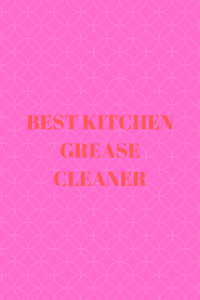
Kitchen walls are easy to clean till the stains dry and forms a messy gunk. Different methods can be used to clean walls.
The best and easy method is by use of homemade cleaning products. There are several to choose from but let us cover the commonly used methods:
Cleaning grease with vinegar
Fill an empty spray bottle with pure vinegar. If you are affected by the smell of vinegar, add water to the mixture and make it half and half mixture.
Spray the mixture onto the stained wall and let it sit for 10 minutes.
The amount of spray depends on how much gunk is on the wall. Wipe the surface with a clean damp cloth till the stains disappear.
If the stains do not disappear, use a non-abrasive scrubber to scrub. Be gentle to avoid peeling off paint or destroying the surfaces. Be careful not to apply vinegar on unsealed or porous surfaces.
Cleaning grease with baking soda.
Mix baking soda with water to create a paste on a small container. Mix it in small portions to avoid wastage.
Using a damp cloth or non-abrasive scrubber, apply the paste onto the stained surfaces. Let it sit for 5 minutes then wipe it clean.
If the stain persists, repeat the process. Extra care should be applied since baking soda is abrasive and can damage surfaces if scrubbed too hard.
Cleaning grease with vegetable oil.
How can vegetable oil be used to clean grease off kitchen cabinets? Surprisingly as it sounds, vegetable oil is a very good degreaser.
Using a clean cloth or paper towel, apply oil on the stained wall or cabinet surface. Let it sit for 5 minutes and then wipe it clean.
The gunk should come out leaving a clean surface.
Kitchen walls need extra care since the surfaces are fragile. You can however also use the commercial grease cleaner to clean them.
Using cleaners that are not friendly to your surfaces may end up corroding them.
3.Kitchen cabinets
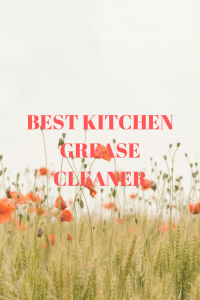
Kitchen cabinets come in different qualities. The good quality materials are easy to degrease and rinse.
However, the cheap materials can swell if water gets in at the seams or edges. It is important to take care of them and use minimal water.
Best degreaser for kitchen cabinets is the same as that used for the walls. It is also good to apply coat of drying oil, such as Tung or wood oils perks to help preserve the cabinet materials.
This can be done monthly or bimonthly, depending on how often the surfaces are cleaned.
4.Countertops and stovetops
The stovetops are mostly removable parts. The drop gates, knobs, and burner tops are the greasiest parts in the kitchen.
The commercial grease cleaner is always best to use on this. There are several types that are specifically made for countertops and stovetops.
Drop the parts in water mixed with the commercial grease remover of your choice. Scrub them keenly to ensure they are squeaky clean and rinse them thereafter. Dry them with a clean cloth or let them drain the water before returning them.
It is good to apply an oil covering on the stovetops to avoid rust forming on old cookers.
5.Metal surfaces
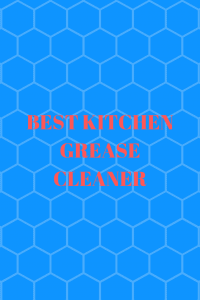
The most asked question is how to remove grease from metals. Metals are among kitchen delicate surfaces.
Unless they are made of stainless steel, scrubbing them too hard may expose the metal resulting to formation of rust.
Although rust cannot kill you, ingesting too much of it may not be healthy.
The best way to degrease metal surfaces is by use of oil. This works well on all metal surfaces including the overhead exhaust hood, refrigerator or even the dishwasher.
6.The floor
The kitchen floor contains grease splatter, backsplash, and food particles. Depending with the material used on the floor, the commercial grade degreasers are best.
Using sufficient amount of degreaser of your choice, mix it with water and use it to clean the floor.
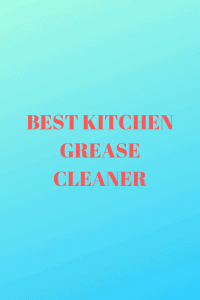
It is advisable to clean the underneath of cabinets and all hidden corners to collect all the food droppings. Unclean corners and food dropping may attract insects in the house. Always dry the floors properly to avoid slippage.
In conclusion, the kitchen is the haven of every house. The best delicacies are prepared there and care should be taken of all its surfaces.
It is not only healthy but also fulfilling to have the kitchen sparkling clean. Each surface has their best way of cleaning them and also their best degreaser to use. After that long day of scrubbing and rinsing, it is time to place that umbrella on the Pina colada and enjoy.
Related articles